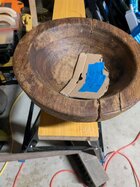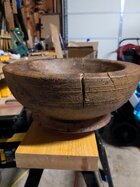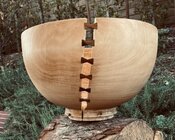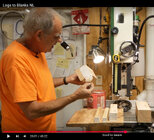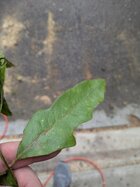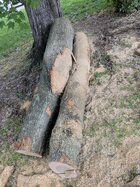Red oak leaves have pointed lobes, White oaks have rounded lobes.
I haven't seen that particular leaf you show in the first picture on trees around here and I don't know a name for it. There are a bunch of species of trees in both the red and white oaks.
I'm not good at ID from bark.
The best way is to prepare a small sample showing the end grain, sliced clean with a single=edge razor blade. This article explains in section 7, "Look at the end grain".
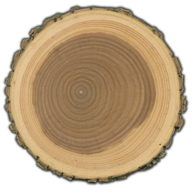
www.wood-database.com
You have to slice off a bit showing at least a few rings of end grain in the heartwood in order to best see the pore structure. The sample doesn't have to be big - I usually cut a piece maybe 1/2" wide, 1" long, and thick enough to hold onto with the other hand is enough. (don't sand the sample)
Look at the pores with a hand lens, best about 10x. (I use a low power stereo microscope.)
Red oak and white oak both have large early-wood pores. The pores in red oak are open, like soda straws. The pores in the white oaks are clogged with something called tyloses - this prevents liquids from flowing easily make white oak a good choice for outdoor things and for whiskey barrels.
This shows both red and white oak. You can easily see the the empty early wood pores in the red oak.
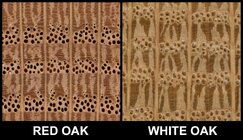
The "towers" of fine late wood pores with fine latices of tiny pores between are quite distinctive in oaks.
Another distinctive feature in the oaks is the large rays, visible without magnification. The rays in white oak can be quite long.
Examining the end grain this way may not identify the wood, but it can often let you know what wood it's NOT.
At the bottom of the Wood Database ID page is another way to identify a wood sample by sending it to a gov laboratory, free to all US citizens.
But regardless of the species, many have a high shrinkage rate. The wood shrinks as water leaves, mostly through the end grain. Anchorseal helps a lot but is mostly wax and wax slows but doesn't stop water and can't prevent the cracks from stresses. As mentioned, if the bottom is quite thick relative to the rim the rim can shrink sooner which might explain the cracks. If all the wood loses water at the same rate, it would just shrink and warp. If it leaves one area more quickly, that area will "feel" the stress.
JKJ

